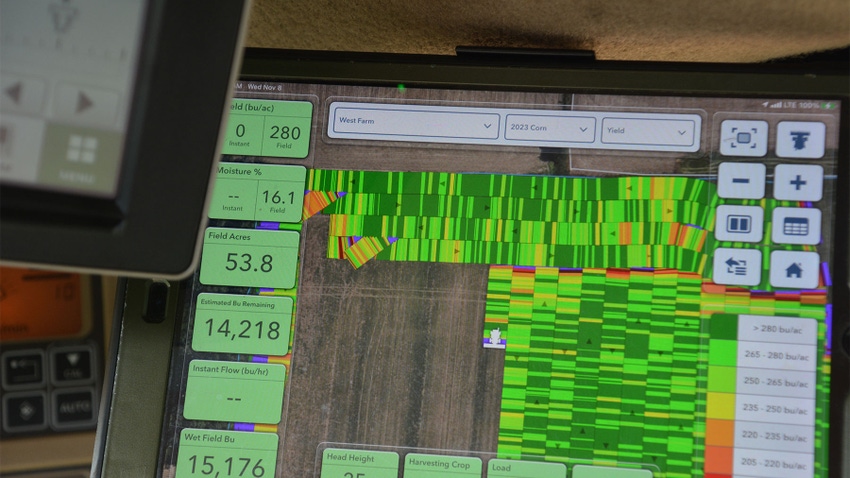
OK, suppose you could design the perfect season for corn. Show of hands: How many would include a verified drought in June? Who would ask the weatherman for cloudy, smoky days in June and July? Finally, how many would dial up a second verified drought to close the growing season?
No hands up? Yet that describes the season many fields saw this year, especially in the eastern Corn Belt. Except for fields hit with summer thunderstorms, many areas finished the growing season several inches of precipitation behind for the year. Yet corn yields were among the best ever on some farms.
For example, the 100-acre Corn Watch ’23 field in central Indiana rolled out yields well above the state average, and above the long-term farm average. Final yield was 279.8 bushels per acre of dry corn.
Dan Quinn, Purdue Extension corn specialist, saw yields top 300 bushels per acre in some plots, especially at the Purdue agronomy farm near West Lafayette, Ind., home to both timber and prairie soils. The farm is officially known as the Agronomy Center for Research and Education, or ACRE.
Where did all this corn come from?
“We harvested very good yields in lots of areas this year, not just on the best soils,” Quinn says. “Instead of looking at what wasn’t great about the season this year, look at the positives. See what did go right, which might explain solid yields in many areas.”
Dave Nanda, director of genetics for Seed Genetics Direct, agrees. Seed Genetics Direct sponsored Corn Watch ’23.
“One positive factor was absence of disease until late in the season in many areas,” Nanda says. “Gray leaf spot was present, but it came in later than in some years. Many growers sprayed fungicides, which kept it in check when it did start to develop.”
Factors promoting yield
Here are more thoughts about why 2023 produced top yields:
Good start. While some were delayed by wet soils in April, planters rolled in many places by May 10. Those who flagged stands noted quick, relatively uniform emergence — more like 2022, another overall good corn year, than 2021, when corn struggled to emerge in cool, wet soils, Nanda recalls.
Rainfall timing. While drought bookended the season for many, there was ample rainfall in the middle of the year when corn made key decisions. Rains returned in many areas around July 1, providing good conditions when plants determined number of kernels per row. Reports from several fields indicated average corn ears were at least 10% to 15% longer than average ears in 2022.
Cooler stretches. Perhaps cooler weather in June and from early August through mid-August aided corn more than many realized. That’s the critical pollination period and start of grain fill, respectively, Quinn notes. “Cooler weather may also have factored into corn maturing slower than normal, and being wetter than normal in the fall,” Quinn adds. “Some blame that on smoky days, but cool weather was more likely the bigger factor.”
No ear molds. “One year ago, ear molds developed in some areas, as it was wet in late August,” Nanda says. “This year, it went dry in late August, and ear molds weren’t a big issue in most cases.”
About the Author(s)
You May Also Like




